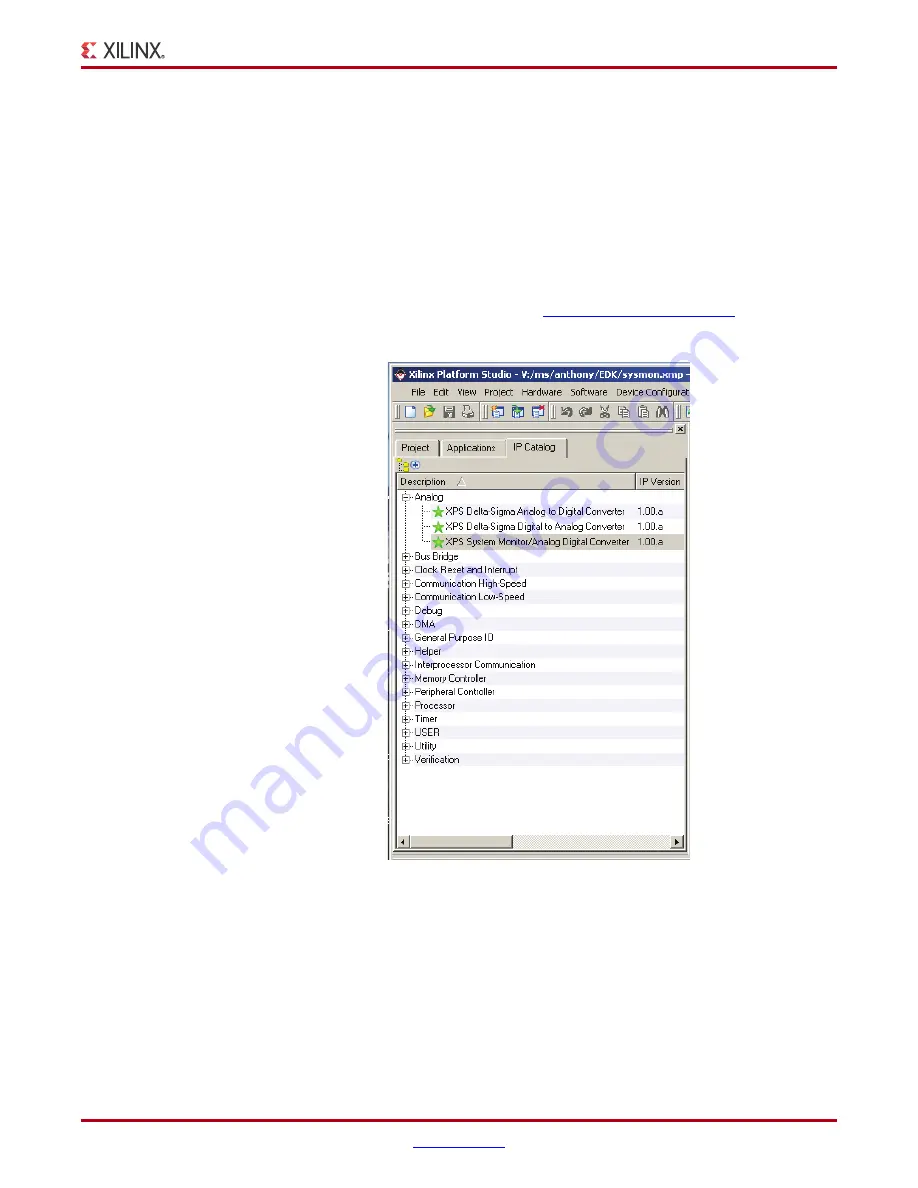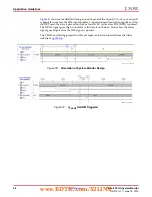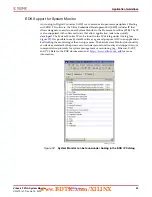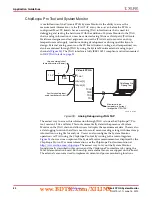
Virtex-6 FPGA System Monitor
59
UG370 (v1.1) June 14, 2010
Application Guidelines
EDK Support for System Monitor
An Analog-to-Digital Converter (ADC) is a common microprocessor peripheral. Starting
with EDK 9.2i software, the Xilinx Embedded Development Kit (EDK) includes IP that
allows designers to easily connect System Monitor to the Processor Local Bus (PLB). The IP
is also supported with software drivers that allow application code to be quickly
developed. The System Monitor IP can be found in the IP Catalog under Analog (see
). It is possible to use System Monitor as a general-purpose ADC in an application
by disabling the monitoring of the on-chip sensors. The basic System Monitor functionality
can also be extended by the processor to include custom functionality and support various
communication protocols for system management or monitoring (e.g., Ethernet, UART,
and I
2
C). Refer to the EDK documentation at
for more
information.
X-Ref Target - Figure 32
Figure 32:
System Monitor can be found under Analog in the EDK IP Catalog
UG
3
70_
3
2_
060
8
09
www.BDTIC.com/XILINX




































